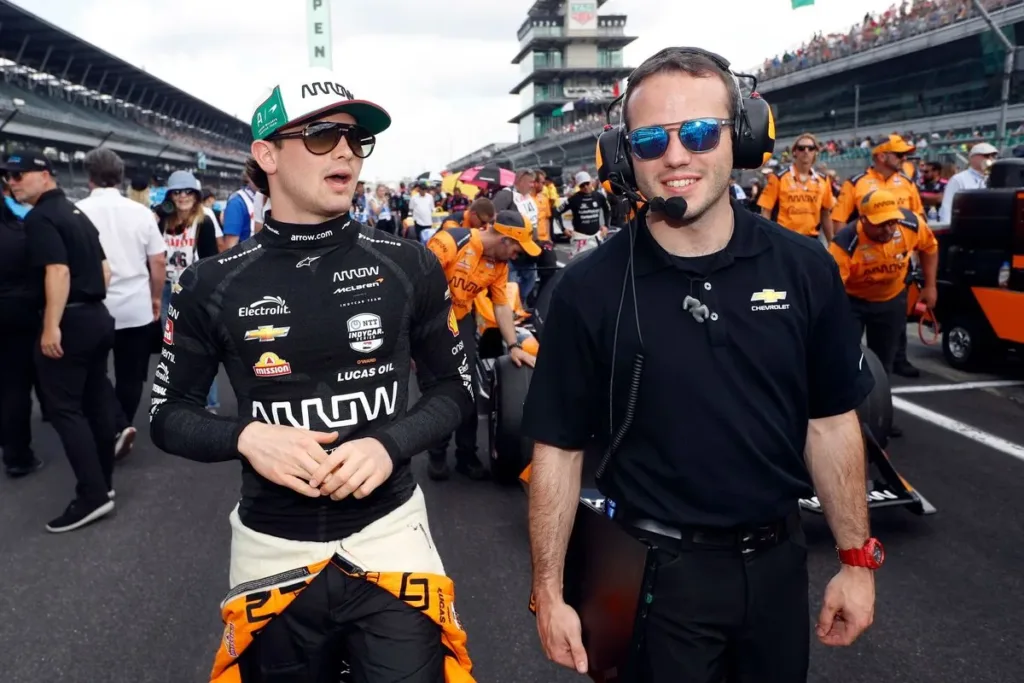IndyCar 2023: Pato O’Ward Feels the Power of Hybrid Unit in Mid-Ohio Debut
This past weekend, IndyCar’s much-anticipated hybrid unit finally made its debut in opening practice at Mid-Ohio Sports Car Course. Despite mixed conditions limiting running, Pato O’Ward was able to get a feel for the differences the new technology brings to the table. The 25-year-old Mexican driver of the No. 7 Arrow McLaren Chevrolet logged 11 laps, posting a best time of 1m07.8407s to finish seventh overall in a session impacted by rain midway through.
The new IndyCar era combines the current 2.2-liter twin-turbocharged V6 internal combustion engine with supercapacitor hybrid technology, featuring a low-voltage (48V) motor generator unit (MGU) with an energy storage system (ESS). This powerful package, along with push-to-pass, provides drivers with over 800 horsepower at their disposal.
O’Ward, currently sixth in the IndyCar championship standings, shared his initial impressions of the hybrid unit, saying, “You can feel it. You can definitely feel it when you engage the deploy. It’s obviously not as big as I think people are thinking in terms of lap time. It’s less than two tenths I would say with a perfectly optimized usage of deployment strategy.“
The IndyCar driver believes the system has more to offer, stating, “I think the system is capable of so much more, so I would like to see that evolve into let’s really push this system and see how much it can actually give us in terms of lap time because if it gives us four, five, six tenths over the lap, I think that’s when we’ll really see it getting optimized by all the teams and just trying to perfect it as much as possible because now it won’t be as — it’ll usually overthrow a little balance difference in the car exactly.“
O’Ward was among the drivers who contributed significantly to the nearly 32,000 miles logged since November 2022, when Chevrolet and Honda collaborated with IndyCar on the hybrid effort. One unique aspect of the hybrid unit is the rapid rate of harvesting energy available for deployment over the course of a lap around the 2.258-mile, 13-turn natural terrain road course.
The Mexican driver compared the energy harvesting process to that of Formula 1, explaining, “Yeah, there’s different levels to that, and it’s very similar to — I wouldn’t say it’s similar to the Formula 1 car, but it’s the same kind of idea of, like, the braking generates the energy, it goes into the pack, and then you deploy it where you wish.“
However, O’Ward highlighted the key difference, saying, “Different to us, we have to manually deploy. If you get out of sequence and you have to manually regen, there’s limits to how much you can regen and limits to how much you can deploy, so there’s a lot of limits that we need to work through.“
🔗 Source
